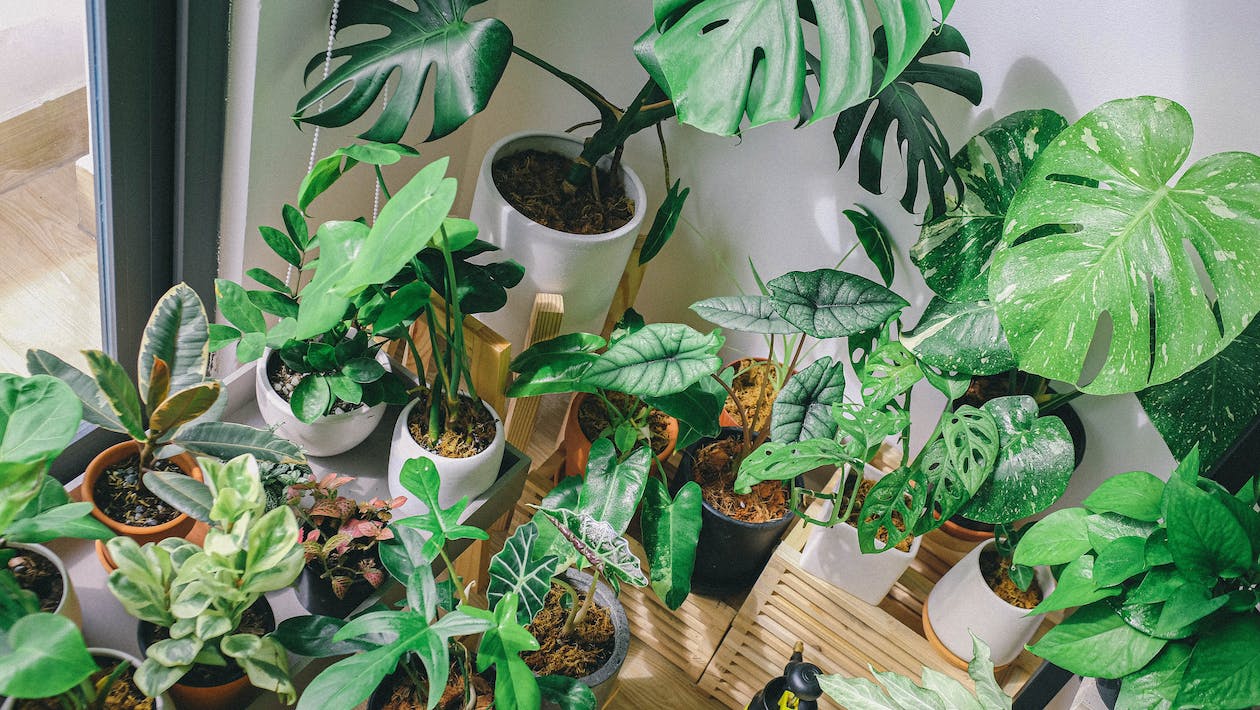
As the vibrant colours of summer foliage give way to the earthy tones of autumn, the fall season brings its unique charms and challenges. One of these challenges is the potential decline in indoor air quality. However, there’s a simple and natural solution to help improve the air you breathe indoors during the fall—houseplants.
In this article, we’ll explore the factors that can affect air quality during the fall and how indoor plants can be your allies in creating a healthier indoor environment.
The Fall Indoor Air Quality Challenge
Several factors contribute to diminished indoor air quality during the fall:
Reduced Ventilation
As the weather cools down in the fall, people tend to keep their windows and doors closed, reducing ventilation. This can lead to the buildup of indoor air pollutants, such as those from cooking and heating sources.
Seasonal Allergens
The falling leaves may be picturesque, but they can also bring a surge in seasonal allergens like pollen and mould spores. These can infiltrate your home and irritate allergies or respiratory conditions.
Wildfires
In many regions, the fall season brings an increased risk of wildfires, which can lead to the spread of smoke and particulate matter, compromising air quality over vast areas.
Temperature Inversions
Fall weather patterns, with cool nights and warm days, can create temperature inversions. These trap pollutants close to the ground, leading to smog and poor air quality in affected regions.
The Role of Indoor Plants
Houseplants are not just decorative; they can also play a vital role in improving indoor air quality during the fall season:
Air Purification
Many houseplants have the remarkable ability to remove common indoor pollutants like formaldehyde, benzene, and xylene from the air. Popular choices include spider plants, peace lilies, and snake plants.
Humidity Regulation
Some plants, such as Boston ferns and peace lilies, release moisture through a process called transpiration. This can help combat the dry indoor air common in the fall and winter months, making it easier to breathe comfortably.
Allergen Reduction
Certain houseplants, like the Boston fern, can help reduce allergens in the home. Their foliage can trap and filter airborne particles, improving overall air quality.
Stress Reduction
Beyond their air-purifying capabilities, indoor plants can also contribute to reduced stress and enhanced well-being. A healthier indoor environment promotes relaxation and better overall health.
Choosing the Right Indoor Plants
Selecting the right plants for your home is essential. Consider factors such as lighting conditions, maintenance requirements, and your personal preferences. Here are a few popular air-purifying plants that are suitable for indoor spaces during the fall:
- Spider Plant (Chlorophytum comosum): Thrives in various lighting conditions and is excellent at removing indoor pollutants.
- Peace Lily (Spathiphyllum): Prefers indirect sunlight and effectively filters out common pollutants.
- Snake Plant (Sansevieria): Requires minimal care and can tolerate low light, making it a perfect choice for fall.
- Boston Fern (Nephrolepis exaltata): Ideal for increasing indoor humidity and removing airborne allergens.
- Aloe Vera (Aloe barbadensis miller): Known for its air-purifying qualities and soothing properties.
This fall, improve indoor air quality and bring a touch of nature indoors to enhance your living space and breathe cleaner, fresher air. Indoor plants not only add beauty to your home but also serve as natural air purifiers, helping you combat the seasonal air quality challenges that autumn may bring. With the right selection and care, your indoor garden can make your home a healthier and more pleasant place to be during this beautiful season.





